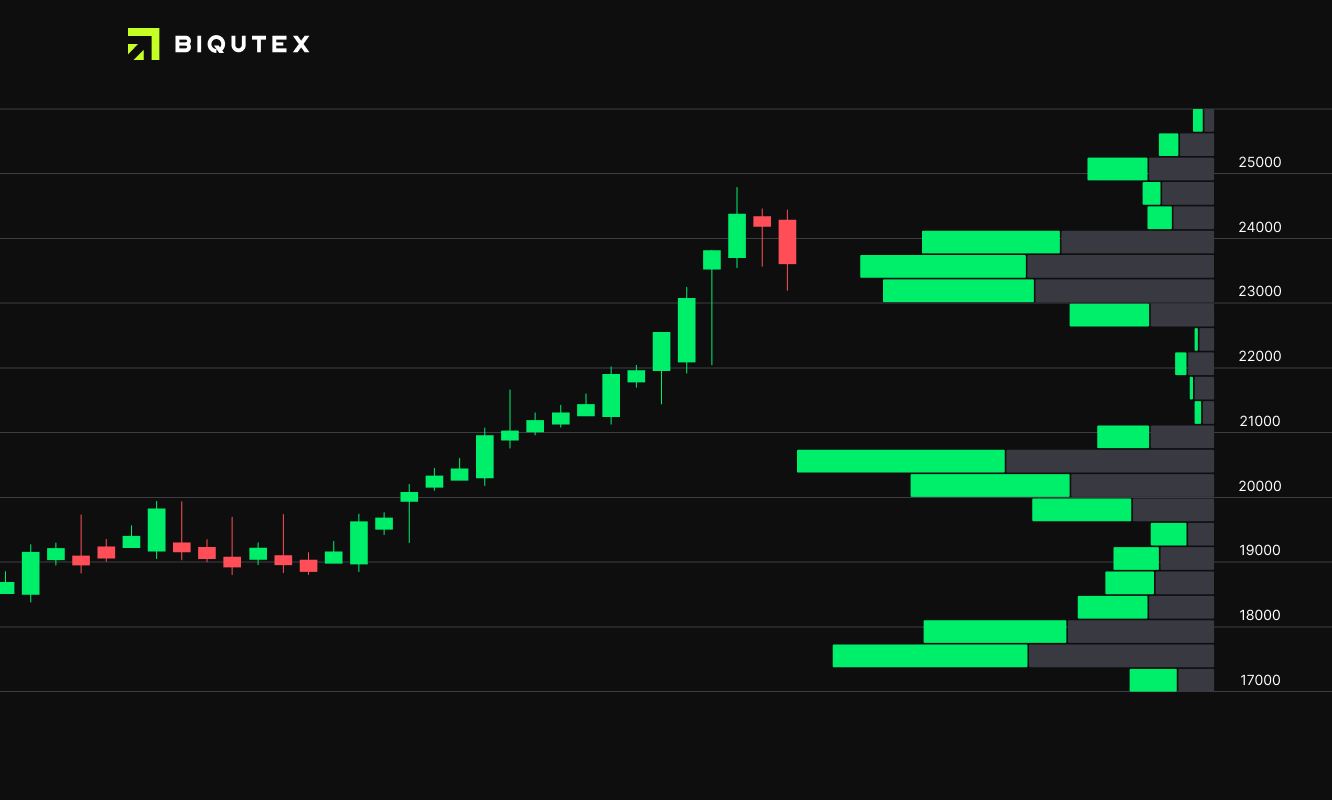Beginner's Daily Risk Management for Futures Trading
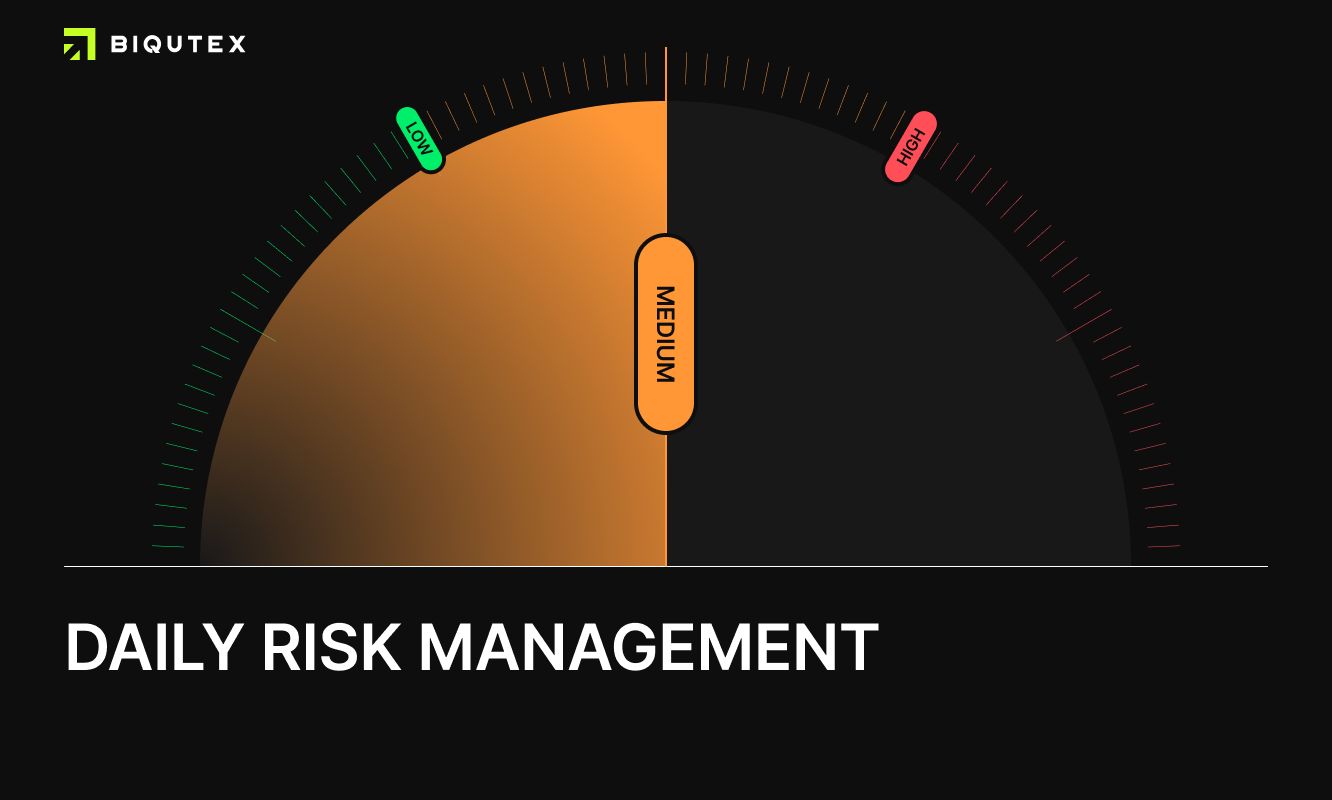
Due to the expansion of the crypto market, more products and tools are available for traders to explore. Let’s take an example of Futures Trading which is a type of crypto derivative (financial instrument) that can be used to get exposure to the price movement of an asset without actually owning it. Sounds complicated? Let’s break down the “trading futures for dummies” as well as discuss the risk management in futures trading.
Sounds safe enough? Not completely! Every type of trading can include risks and losses that need to be taken into consideration. Let’s uncover the risk management in futures trading and try to simplify it. Day trading risk management is an essential aspect of successful trading, as it helps traders to mitigate potential losses and protect their investments. Here are some tips on crypto day trading rules and risk management for Futures Trading
Avoid Using the Entire Deposit
To effectively balance trading and risk management, it is important to avoid using the entire deposit for many reasons. Doing so puts your entire account at risk. If the trade goes against you, you will lose all the money in your account. It is important to manage risk and use proper money management techniques to protect your account from large losses. Here are some reasons why using the entire deposit on one trade is risky:
- No trade is guaranteed: Even if you have a high probability trade setup, there is no guarantee that the trade will be profitable. Markets can be unpredictable and sometimes unexpected events can cause a trade to go against you.
- Emotional decision-making: When you have all your money on one trade, you may be more likely to make emotional decisions. This can lead to impulsive trading decisions that are not based on a sound analysis of the market.
It all works in such a way that you think "here it is, my future profit, it's time to put 100% on the long with a leverage of x30, because the profit is guaranteed. And in the end what are you left with? A small downward movement and here you have already lost part of the deposit. But you will lose even more money if you open a position, the market will change and being in a good place to open a position you will have no deposit and you will not be able to open another order. Stupid, isn't it?
You don't have to think that you have to break everything down into some complicated percentages, just use only a part of the deposit for transactions, not the entire deposit. Half or less than half, so you will always be able to trade.
Leverage and Risk
As you know leverage is a tool used by traders to increase their potential profits by using borrowed funds to make larger trades. Day trading risk management comes up first when dealing with leverage. The volume of leverage can significantly impact both profits and losses. Even small price movements in the wrong direction can lead to significant losses.
For example: let's say a trader wants to buy a futures contract that costs $100,000. If the trader uses no leverage, he will need to have $100,000 in full to buy the contract.** If the price of the contract increases by 10%, the trader's profit would be $10,000 (10% of $100,000).
However, if the trader uses 100x leverage, he will need to put only $1,000 of his own funds to buy the contract and will borrow the remaining $99,000 from their broker.
If the price of the contract increases by 10%, the trader's profit will be $10,000. However, if the price of the contract decreases by 1%, the trader's loss would also be $1,000, wiping out their entire trading account.
In practice, leverage x10 is often enough, although many people like to "play roulette" and open a small position at x100. But what is the point in that? This is not trading.
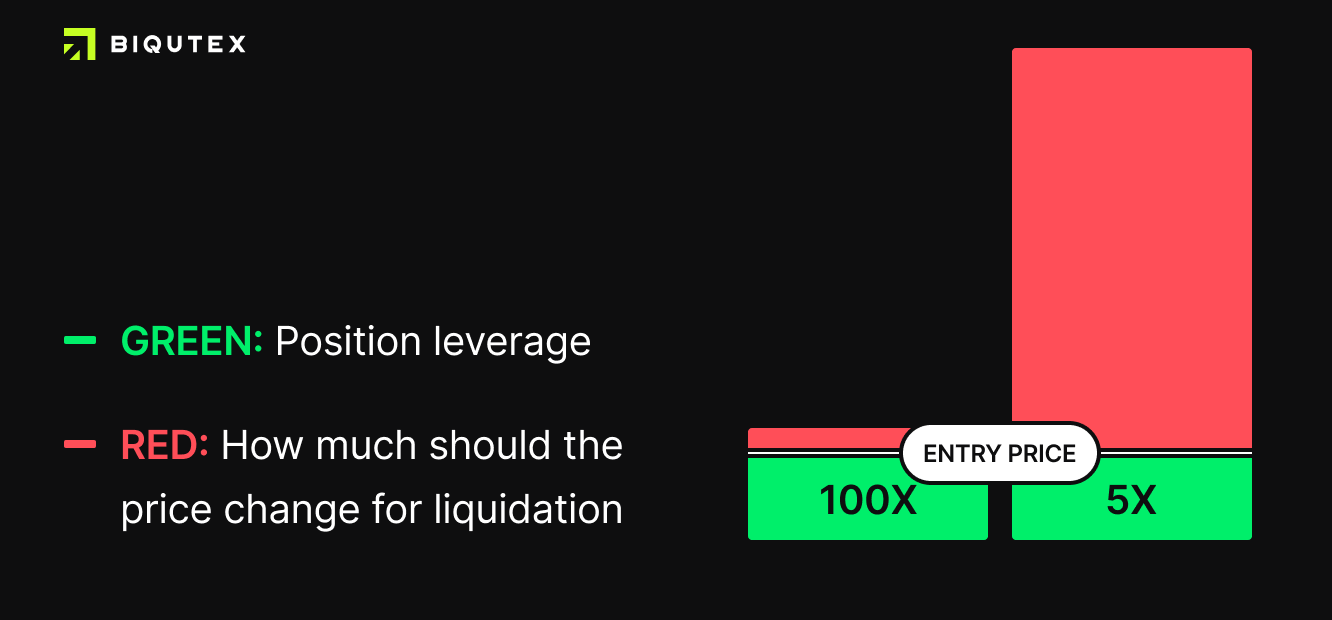
When you open a position, you are always notified at what price your position will be liquidated. Keep that in mind when you plan to open a position.
We talked about how futures trading works in this article. It is a must-read!

How to fix your position
Trading and risk management
Сan go very well together if done right! In trading, it is important to have a plan in place to manage potential losses and fix mistakes when they occur.
Here are some steps you can take to fix your position when trading:
- Take-Profit Orders: A take-profit (TP) order is an order that automatically closes your position if the price of the asset reaches a certain level. By setting a TP order, you can lock in your profits if the trade goes in your favor.
- Set Stop Loss Orders: A stop loss (SL) order is an order that automatically closes your position if the price of the asset reaches a certain level. We will talk about SL orders in more detail below. It is essentially an order that is triggered at the price at which you are still willing to take a loss. I will write more about this and the risks below.
- Adjust Position Size: If you still do not want to set a stop-loss or are afraid that the position can be liquidated - you can close a part of the position by fixing the loss, or adjust the amount of leverage used.
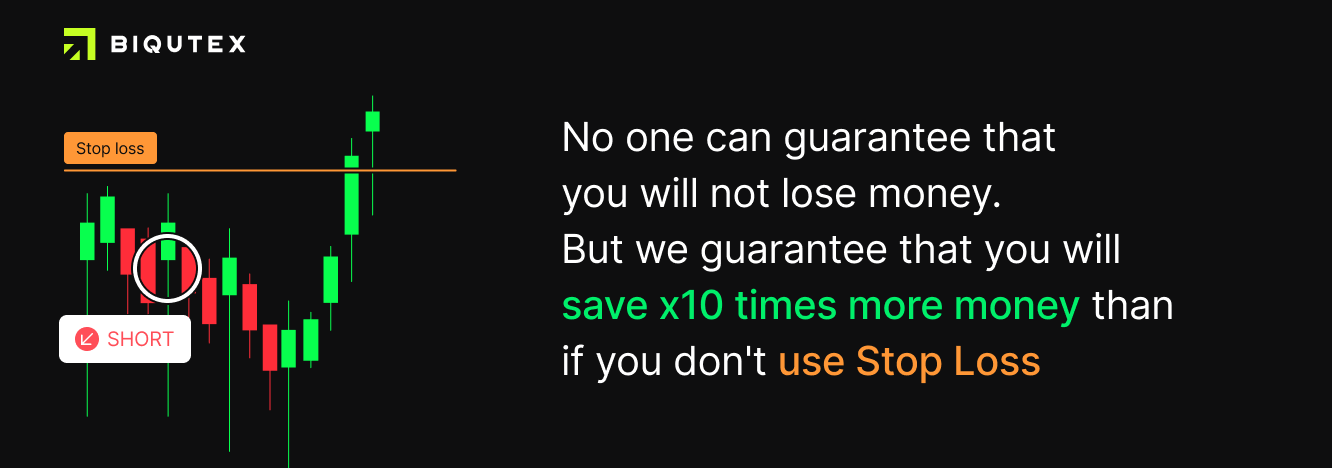
How they are designed, what they are, how they save money and help you earn - we wrote in this article.

Risk of the Deal
Effective risk management in day trading is crucial as discussed. In addition to all of the above, you need to remember the mathematics and the importance of basic statistics in making deals.
Risk-to-reward ratio, have you ever heard of it? When we open an order, we must understand in advance where we think the price will go and how much we will earn from it.
In practice, this means that we must place a Stop Loss order at least so that the loss was three times lower than the expected Take Profit. Let traders do not always set Take Profit, but you should set Stop Losses automatically without thinking about them.
So it turns out: opening a position for 1000 USD, I can risk the entire position only if the profit should be at least 3000 USD. Thus, according to mathematical statistics, even if you are wrong 50% of the time - you will make money.
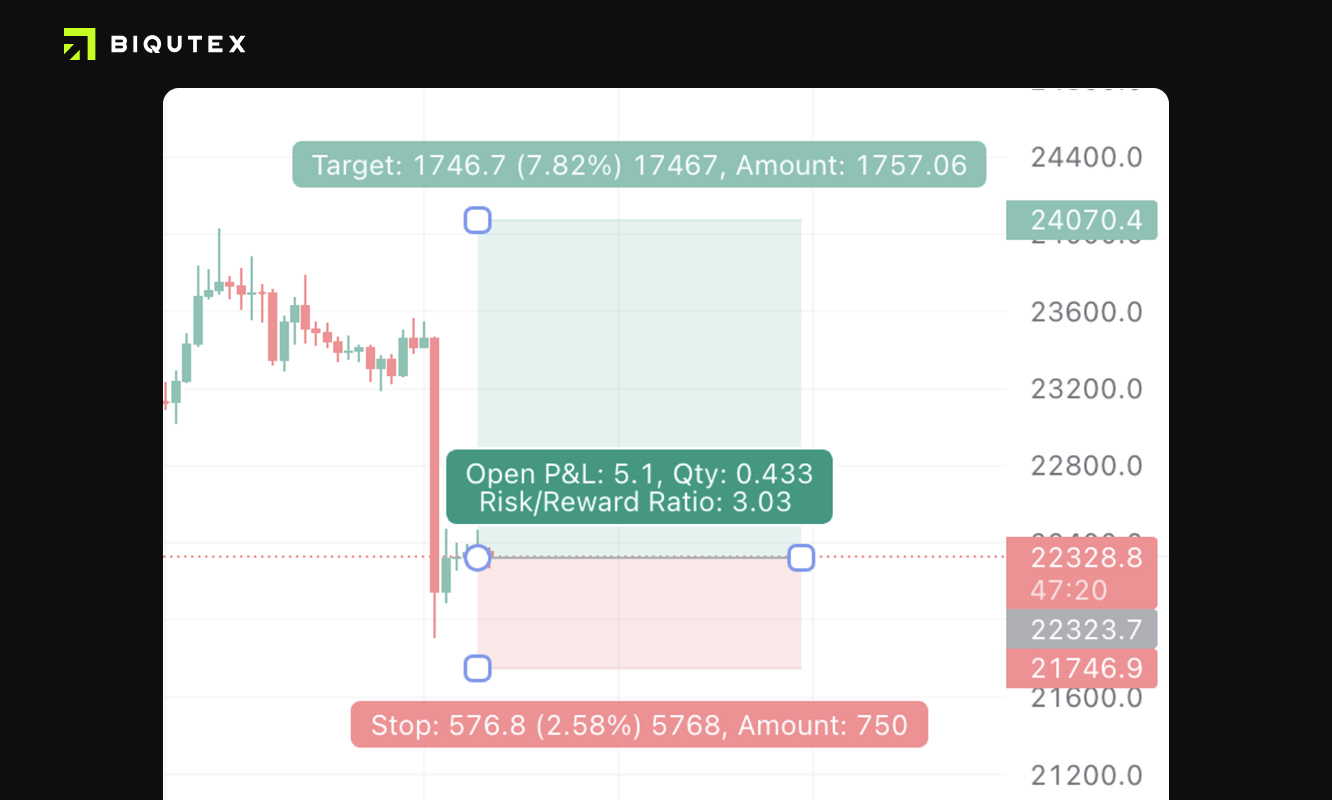
Psychology
Risk management day in trading can be very challenging not only because you never know exactly what turn the market will take but also it is emotionally hard. When you open a position and it shows a loss of -70% it is necessary to keep sober mind and follow the strategy you chose when opening the position.
Sometimes it happens that in a moment you want to close a position and relax. At this point, you need to postpone trading, distract yourself with other things, and then calmly assess the market conditions and understand whether it is worthwhile to exit a position or a temporary loss due to a local price fluctuation. Make sure to balance trading and risk management.

Biqutex Exchange
Biqutex is an innovative crypto derivatives exchange. Trade an extended list of instruments (Perpetuals Swaps, Futures, Options, Calendar Spreads etc.) with up to 125x leverage and deep liquidity!


